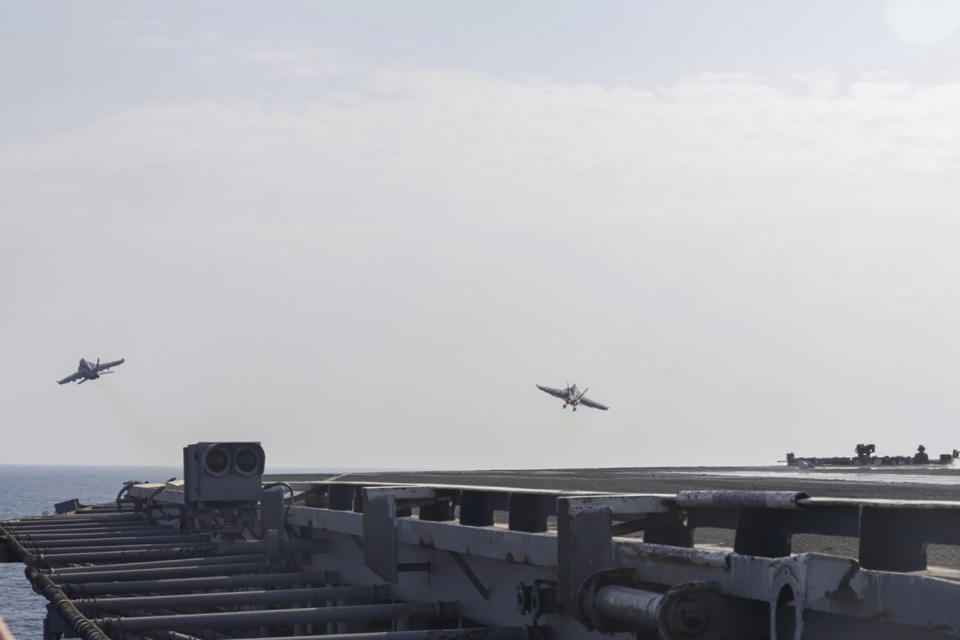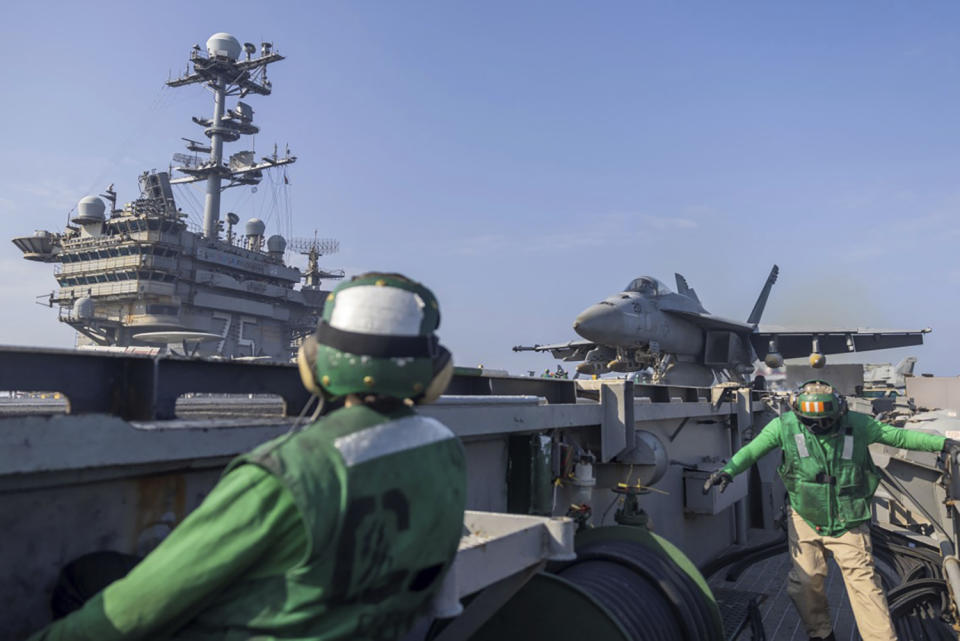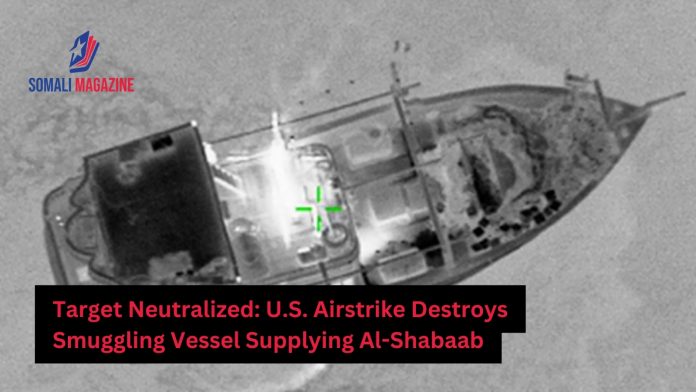Facebook Twitter (X) Instagram Somali Magazine - People's Magazine
A U.S. airstrike has obliterated a stateless vessel off the Somali coast that was allegedly transporting advanced weapons to Al-Shabaab, marking a rare use of airpower against maritime smuggling in the region. The operation, conducted by U.S. Africa Command (AFRICOM) last week, targeted both the primary vessel and a smaller support boat operating in Somali territorial waters. Somali government officials confirmed that all individuals aboard the vessels were “neutralized” and that no civilian casualties were reported.
The targeted vessel was believed to be carrying sophisticated conventional weapons intended for Al-Shabaab, the al-Qaeda-affiliated militant group that has waged an insurgency in Somalia for over a decade. Intelligence sources suggest that the group’s evolving arms supply network may include ties to Yemen’s Houthi movement, raising concerns among Western security agencies about the growing complexity of regional smuggling operations.

A U.S. official speaking to The War Zone revealed that the decision to launch the strike was made under updated Pentagon engagement protocols that allow for rapid response to threats. “They had to do things quickly. They didn’t have time to pull in boats [for boarding],” the official stated. Traditionally, maritime smuggling in the region has been countered through boarding and seizure operations, often involving U.S. Navy destroyers or coalition vessels. Direct aerial strikes on seaborne targets are exceedingly rare and signal the Pentagon’s expanding reliance on long-range strike capabilities amid constrained naval resources.
The strategic shift follows an incident in January 2024, when two U.S. Navy SEALs—Chief Special Warfare Operator Christopher J. Chambers and Navy Special Warfare Operator 1st Class Nathan Gage Ingram—were lost during a nighttime boarding operation off the coast of Somalia. The SEALs were attempting to intercept an unflagged dhow suspected of transporting Iranian-made missile components to Yemen’s Houthi rebels.
Chambers fell into the sea amid rough conditions during the operation, and Ingram entered the water to rescue him. Both were declared deceased after an extensive 10-day search failed to recover them. Two Iranian brothers were later indicted by U.S. federal prosecutors for their role in the alleged smuggling operation that led to the death of the Navy SEALS.

The airstrike comes amid escalating violence in Somalia, where Al-Shabaab has intensified its attacks near Mogadishu in recent weeks. The militant group has launched deadly assaults on government forces and civilians, prompting increased foreign military support for the Somali government. The Somali Ministry of Information has praised the strike, stating that it represents a significant step in disrupting Al-Shabaab’s supply chains and weakening its operational capabilities.
The use of airstrikes against maritime smuggling raises broader questions about the evolving tactics in counterterrorism operations. While boarding and seizure missions have traditionally been the preferred method for intercepting illicit shipments, the Pentagon’s shift toward direct aerial engagement suggests a growing urgency in addressing threats before they reach land. Analysts warn that Al-Shabaab’s ability to adapt and forge new smuggling routes underscores the need for sustained efforts to dismantle its networks and prevent further arms proliferation.
As Somalia continues its fight against Al-Shabaab, the focus remains on securing territorial waters and preventing external actors from fueling the insurgency. The U.S. airstrike serves as a stark reminder of the ongoing battle against terrorism in the Horn of Africa and the critical role of international cooperation in maintaining regional stability.

